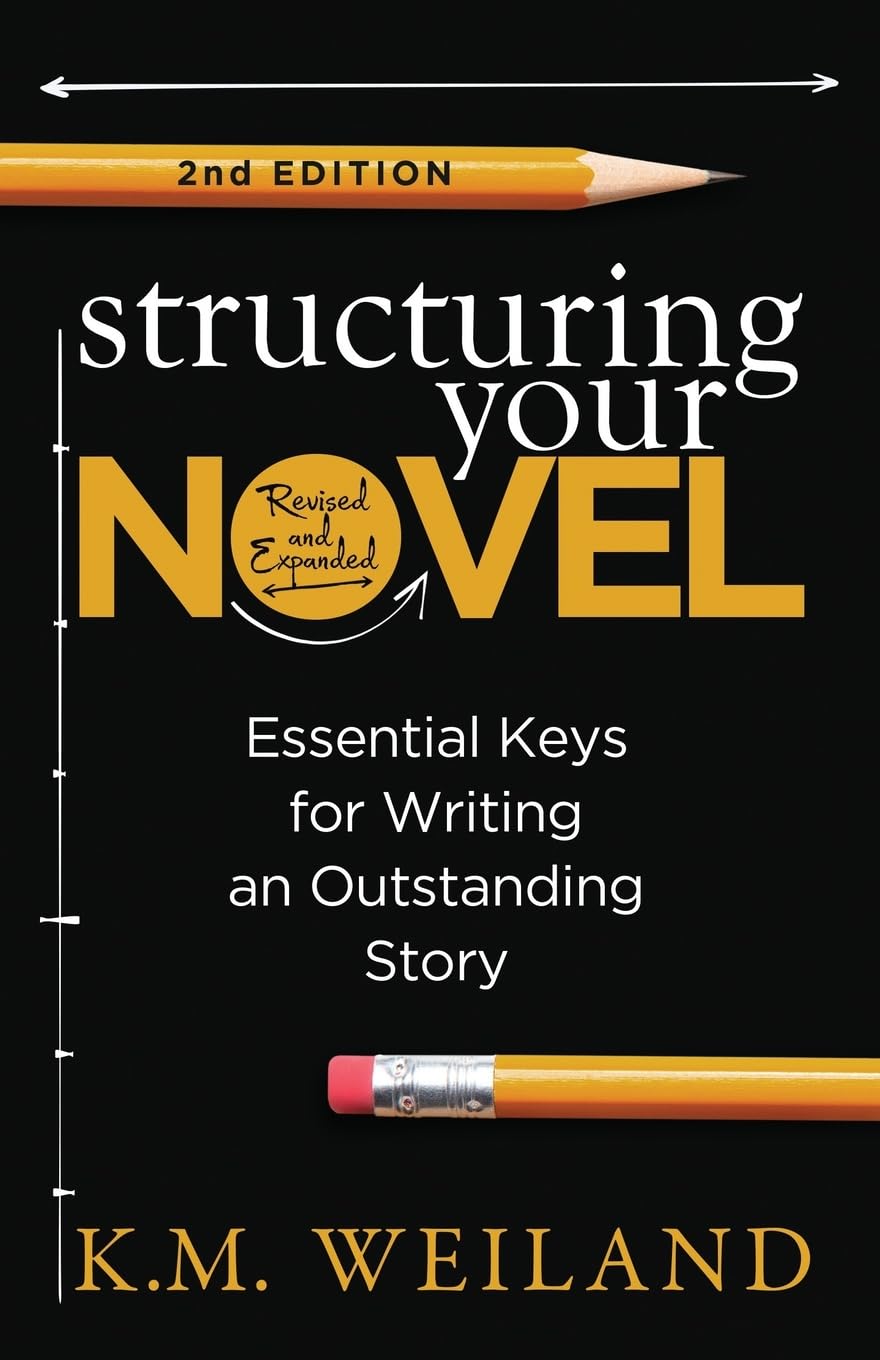

Most ebook files are in PDF format, so you can easily read them using various software such as Foxit Reader or directly on the Google Chrome browser.
Some ebook files are released by publishers in other formats such as .awz, .mobi, .epub, .fb2, etc. You may need to install specific software to read these formats on mobile/PC, such as Calibre.
Please read the tutorial at this link. https://ebooknice.com/page/post?id=faq
We offer FREE conversion to the popular formats you request; however, this may take some time. Therefore, right after payment, please email us, and we will try to provide the service as quickly as possible.
For some exceptional file formats or broken links (if any), please refrain from opening any disputes. Instead, email us first, and we will try to assist within a maximum of 6 hours.
EbookNice Team

Status:
Available0.0
0 reviews
ISBN 10: 1944936203
ISBN 13: 9781944936204
Author: K M Weiland
Why do some stories work and others don’t? The answer is structure. In the 10-year anniversary edition of this beloved writing guide, you will discover the universal underpinnings that guarantee powerful plot and character arcs. An understanding of proper story and scene structure will help you to not only perfectly time your story’s major events, but will also provide you with an unerring standard to use in evaluating your novel’s pacing and progression.
Part 1: The Foundations of Structure
Chapter 1: What Is Story Structure and Why Does It Matter?
The Inescapable Necessity of Structure
Structure vs. Formula
Plotting vs. Pantsing: Finding Your Balance
How Structure Empowers Creativity
The Reader's Expectation
Chapter 2: Understanding the Big Picture: The Three-Act Structure
Act 1: The Setup
Act 2: The Confrontation
Act 3: The Resolution
The Power of Beginning, Middle, and End
Chapter 3: The Core Components of Story
Character Arc: The Heart of the Story
Plot Arc: The Journey of Events
Theme: The Underlying Message
Setting: More Than Just a Backdrop
Part 2: Deep Dive into the Three Acts
Chapter 4: Act 1: The Setup – Laying the Groundwork
The Hook: Grabbing Attention from Page One
The Protagonist's Everyday World
The Inciting Incident: Kicking Off the Conflict
The Call to Adventure (and Refusal)
The Debate: Internal Conflict and Stakes
The First Plot Point: No Turning Back
Chapter 5: Act 2: The Confrontation – The Longest Journey
The Reactive Phase: Dealing with the Consequences
Rising Action and Complications
Pinch Point 1: Increasing Pressure and Stakes
The Midpoint: A Turning Point and Shift in Strategy
The Proactive Phase: Taking Control
Pinch Point 2: The Darkest Hour Approaches
The Third Plot Point: All Is Lost
Chapter 6: Act 3: The Resolution – Bringing It All Together
The Climactic Moment: The Ultimate Showdown
The Fallout: Immediate Aftermath
The Resolution: Tying Up Loose Ends
The New Normal: Showing Character Transformation
Part 3: Advanced Structural Elements and Application
Chapter 7: The Importance of Scenes and Sequels
Scenes: Action and Progress
Sequels: Reaction and Planning
Pacing with Scenes and Sequels
Chapter 8: Subplots: Adding Depth and Complexity
Types of Subplots
Weaving Subplots into the Main Narrative
How Subplots Support the Main Story and Character Arc
Chapter 9: Pacing and Tension: The Rhythmic Heartbeat of Your Novel
Controlling the Flow of Information
Building and Releasing Tension
Strategic Use of Suspense and Mystery
Chapter 10: Troubleshooting Common Structural Problems
The Sagging Middle
Weak Endings
Lack of Cohesion
Characters Without Purpose
Plot Without Meaning
Chapter 11: Applying Structure to Different Genres
Structuring Mystery/Thriller Novels
Structuring Romance Novels
Structuring Fantasy/Sci-Fi Novels
Structuring Literary Fiction
Part 4: Putting It All Together
Chapter 12: Structuring Your Novel: A Step-by-Step Process
From Concept to Outline to Draft
Revision Through the Lens of Structure
Practical Exercises for Structuring Your Story
Chapter 13: The Freedom of Structure
Structure as a Roadmap, Not a Straitjacket
Empowering Your Creative Voice
Writing an Outstanding Story
structuring your novel pdf
structuring your novel workbook
structuring your book
structuring your novel
the structure of a novel
how to structure a novel study
Tags: K M Weiland, Novel, Keys